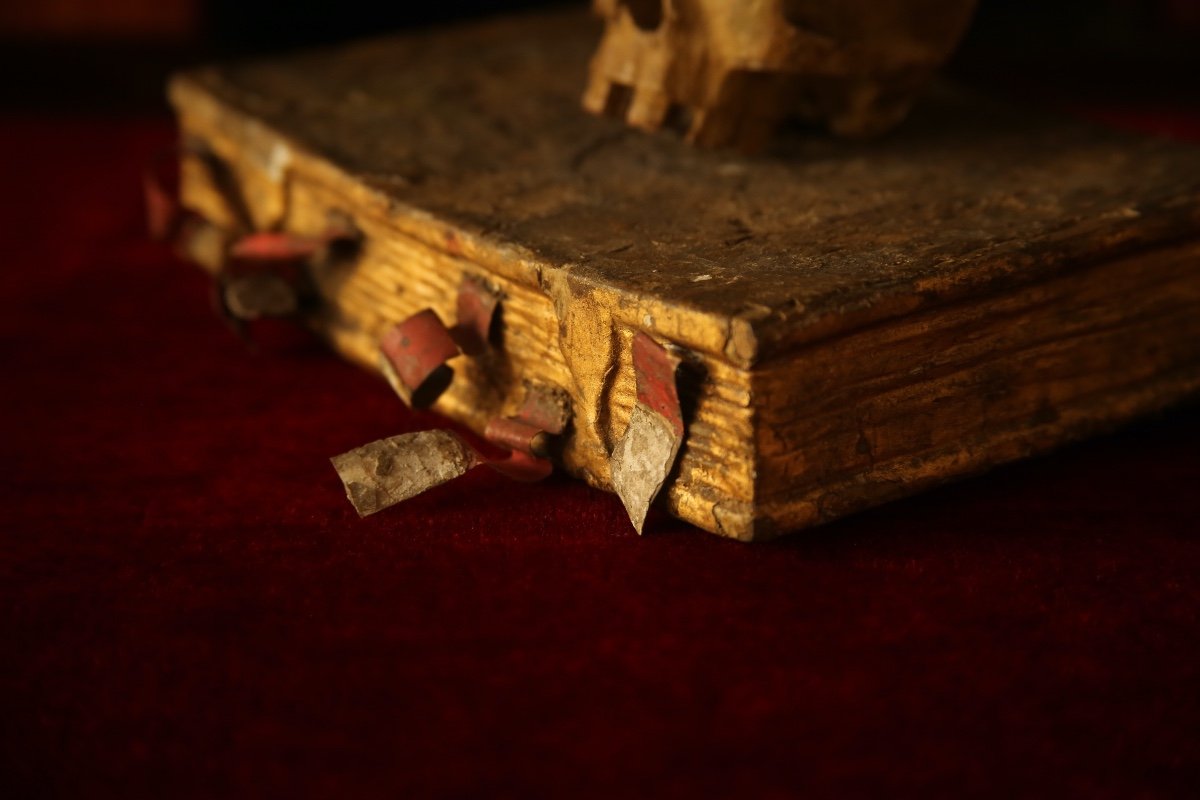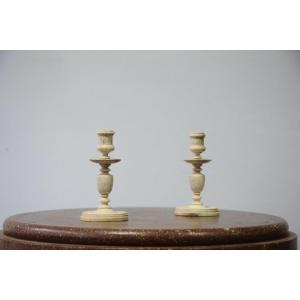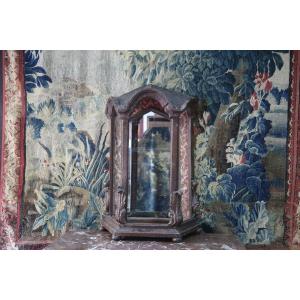-Dimensions: Height: 10.8cm width: 18.8cm depth: 14.5 cm
-The skull is positioned on a closed book, certain pages of which are marked by pieces of parchment. This work is composed of elements that directly refer to the passing of time and refer to the precariousness and finitude of things; a skull positioned on a dusty book. These elements are represented with great concern for realism. The book, in particular, whose "falsely" worn binding with an illusionist dustiness makes its abandonment and dilapidation palpable. The human is no longer of this world. - “Vanity of vanities, all is vanity and pursuit of the wind…”, this sentence from Ecclesiastes, a book of the Old Testament, gave the name “Vanity” to a category of still lifes.
-This genre will develop in the Netherlands in the 17th century, the painters are anxious to integrate moral and religious notions into their composition, to make their work a support for meditation beyond the illusionist performance. The message is to meditate on the transient and vain nature of human life. you have to live well to die well to prepare for the post-mortem condition. The artists will then develop a symbolic language via the objects represented in their works to embody human activities, science, money, the arts, the pleasures of the senses, wealth, power, compared with other elements evoking the passage of time, the fragility of life, the slow but irremediable destruction of all human production, and the triumph of death, often with a human skull. This skull, a universal symbol, refers to the equality of men in death whatever their condition and the fact that they will all end up looking alike when they are nothing more than bones. The isolated representation of the human skull appeared as early as the 15th century, on the reverse of portraits of donors painted on the panels of Flemish polyptychs, such as the Carondelet Diptych (1517, Paris, Louvre Museum). It is about memento mori (“remember that you are going to die”) reminding the sponsors of the vanity of human pretensions. Scientific developments that have made it possible to represent a human skull with the greatest accuracy.
- The work presented here is a vanity expressed in a very sober way, it is linked to a book illustrating intellectual activity. If the presence of an open book underlines the vain nature of the quest for knowledge (the vanity of knowledge, Erasmus “There is nothing more vain than to know much”), here, the closed book seems to symbolize the knowledge which leads to the awareness of the vanity of all things or spiritual wisdom, which leads to the salvation of the soul. More than on the finitude of man, the message of the work insists here on the hope which resides in the knowledge of the fact that he is going to die.
















































 Le Magazine de PROANTIC
Le Magazine de PROANTIC TRÉSORS Magazine
TRÉSORS Magazine Rivista Artiquariato
Rivista Artiquariato